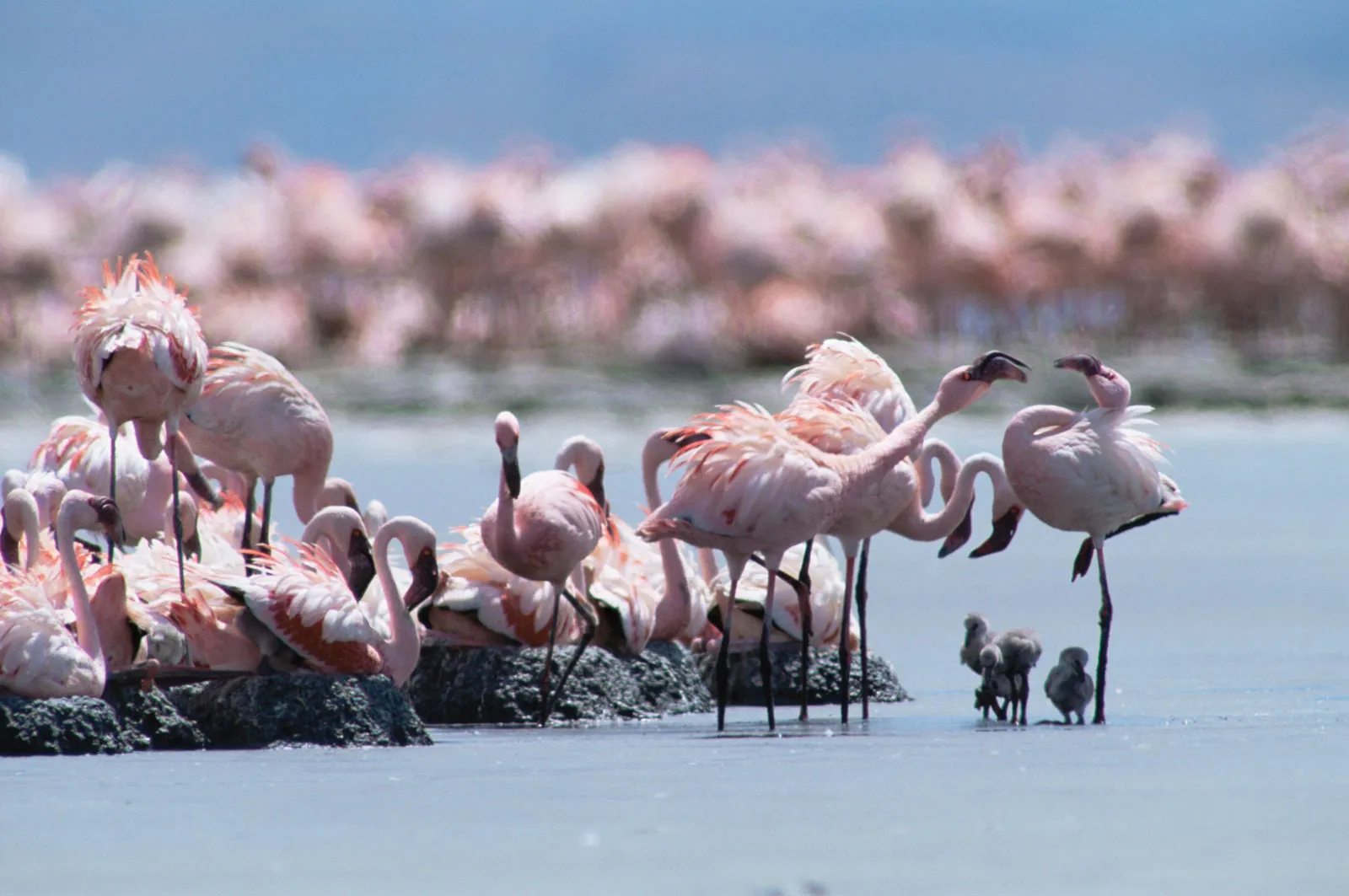Flamingos are wading birds that are known for their long legs and bright pink feathers. The name “flamingo” comes from the Spanish or Portuguese word for “flame-coloured” Interestingly, flamingos are not born with their signature pink colour. Rather, it comes from the beta-carotene pigment found in the algae. brine fly larvae, and brine shrimp that they eat. Flamingos digestive system breaks down these pigments into fats that are deposited in their feathers and skin. As flamingos primarily eat carotenoid-filled foods, they easily colour themselves. However, humans would have to consume large amounts of carotenoid-rich foods to achieve a similar effect.
There are six different species of flamingos worldwide, and their colours vary based on habitat and food sources. Some flamingos are darker or brighter shades of pink, while others are orange, red, or white.
Flamingos are known for their ability to stand on one leg for extended periods, even while sleeping. While this behaviour puzzles scientists, it is a common ability among large wading birds.
Flamingos can measure anywhere from 32 to 51 inches tall and weigh between 2.2 kg and 3.6 kg. They are social creatures, often found in groups while feeding, preening, or sleeping. They feed on algae and small crustaceans by filtering mud and water through their beaks, which have bristles that form a comb-like mechanism.
Flamingos are striking birds, with their pink feathers that come from a diet rich in shrimp, algae, and larvae. They have peculiar behaviours, such as eating with their heads upside down, sleeping with their heads on their backs, and standing on one leg for long periods. Scientists have offered several theories to explain why flamingos stand on one leg. One theory suggests that it helps reduce muscle fatigue and allows them to move more quickly when threatened by predators.
Another theory suggests that it helps regulate their body temperature, as they lose a lot of heat through their legs and feet. Researchers tested these theories by observing a flock of flamingos and found that flamingos were faster when starting on both feet, contradicting the muscle fatigue theory. On the other hand, more flamingos stood on two feet in warmer weather conditions, supporting the body heat theory. Additionally, flamingos spend most of their time in water, which can lower their body temperature fairly quickly, providing another reason for heat conservation. Yet. another theory suggests that flamingos, like whales and dolphins, turn off half their brains when they sleep, and standing on one leg helps them maintain balance and prevent falling. However, ornithologists admit that none of these theories have been confirmed with certainty, and other reasons may exist, such as reducing exposure to waterborne parasites and other hazards.
Picture Credit: Google





